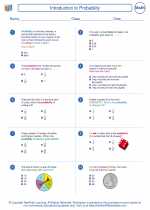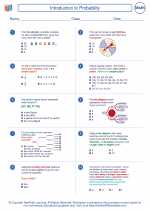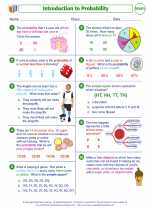Quadratic Polynomial: Explanation and Study Guide
A quadratic polynomial is a polynomial of degree 2, meaning the highest power of the variable in the polynomial is 2. The general form of a quadratic polynomial is:
ax2 + bx + c
where a, b, and c are constants, and a ≠ 0. The graph of a quadratic polynomial is a parabola, which can open upwards or downwards depending on the value of 'a'.
Key Concepts:
- Standard Form: The standard form of a quadratic polynomial is ax2 + bx + c, where a, b, and c are constants.
- Vertex: The vertex of the parabola represented by a quadratic polynomial in the form y = ax2 + bx + c is given by the coordinates (-b/2a, f(-b/2a)), where f(x) = ax2 + bx + c.
- Axis of Symmetry: The axis of symmetry of the parabola is the vertical line that passes through the vertex of the parabola.
- Roots: The roots of a quadratic polynomial are the solutions to the equation ax2 + bx + c = 0. These are also the x-intercepts of the parabola.
- Discriminant: The discriminant of a quadratic polynomial is given by b2 - 4ac. It determines the nature of the roots of the quadratic equation.
Study Guide:
When studying quadratic polynomials, it's important to focus on the following key areas:
- Understanding the standard form and properties of quadratic polynomials.
- Finding the vertex, axis of symmetry, and roots of a quadratic polynomial.
- Graphing quadratic polynomials and interpreting the parabola's characteristics.
- Using the discriminant to determine the nature of the roots of a quadratic equation.
- Solving quadratic equations using factorization, completing the square, and the quadratic formula.
Practice solving various types of quadratic equations and graphing quadratic polynomials to master the concepts. Additionally, familiarize yourself with real-life applications of quadratic polynomials, such as projectile motion and optimization problems.
By understanding these concepts and practicing related problems, you'll gain confidence in working with quadratic polynomials and be better prepared for assessments and real-world applications.
Good luck with your studies!
.◂Math Worksheets and Study Guides Seventh Grade. Introduction to Probability

 Worksheet/Answer key
Worksheet/Answer key
 Worksheet/Answer key
Worksheet/Answer key
 Worksheet/Answer key
Worksheet/Answer key
 Worksheet/Answer key
Worksheet/Answer key
